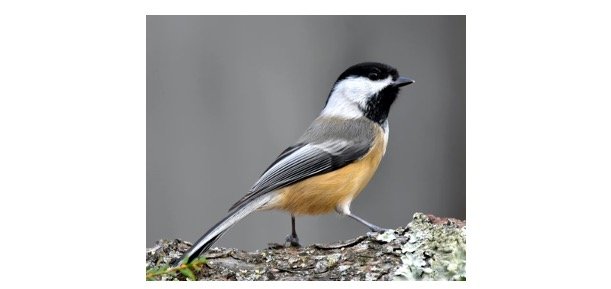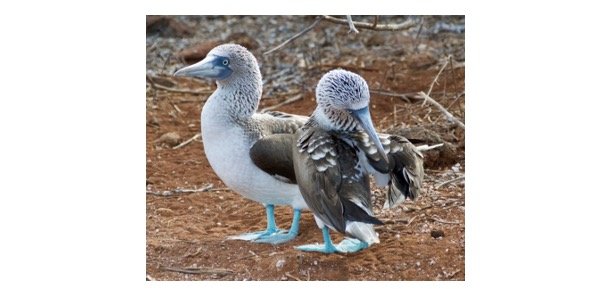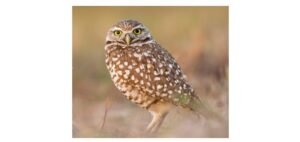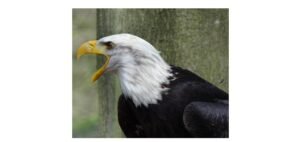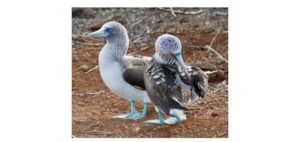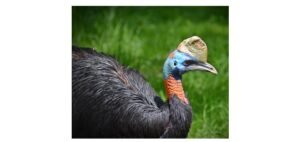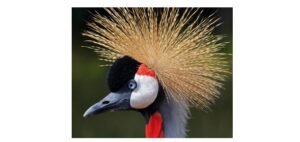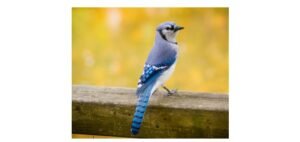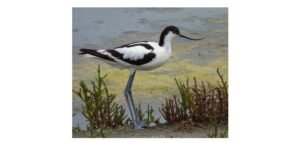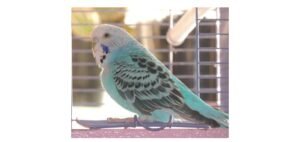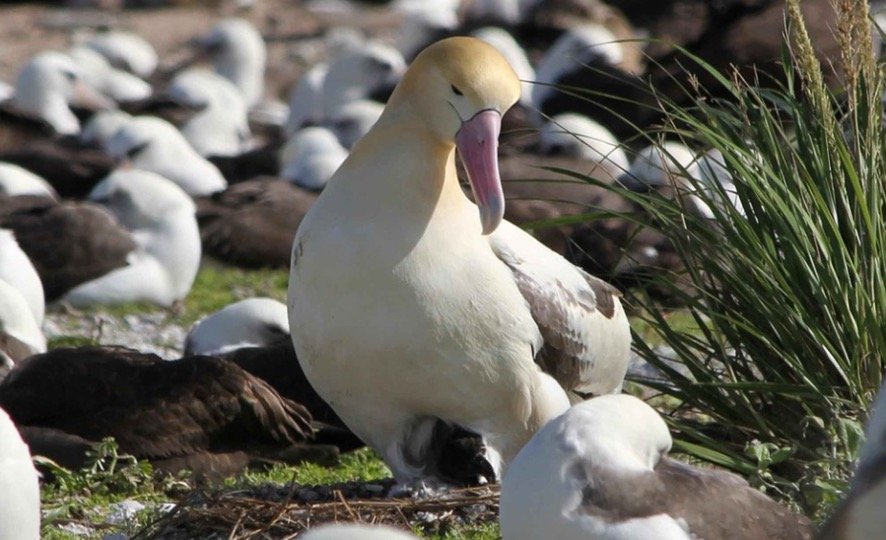
The Albatross (Diomedeidae) is a carnivorous creature belonging to the Animalia family, phylum Chordata, class Aves, order Procellariiformes, and family Diomedeidae. It is about 1.2 m in length and weighs up to 10 kg, and its wingspan is up to 3.3 m, with a lifetime of up to 50 years.
An albatross is a rapid-flying bird that feeds on fish, krill, and squid in the open seas and oceans. The large body size is the most distinguishing characteristic. Albatrosses are preyed upon by sharks, humans, cats, and rats.
Physical features include brown, grey, yellow, red, black, and white skin colorations, feathers on the skin, and a potential flight speed of 50 mph.
Albatross Description
The albatross glides beautifully above the seas, its wings sturdy and solid in the face of heavy wind gusts. For generations, the sight of this familiar seabird with its vast wingspan flying far above the waves has captured the human imagination and inspired stories and legends all around the world.
It’s a genuine survivor, having a variety of adaptations to cope with the stresses of lengthy years at sea. However, because of competition for food with people, their numbers are fast dwindling.
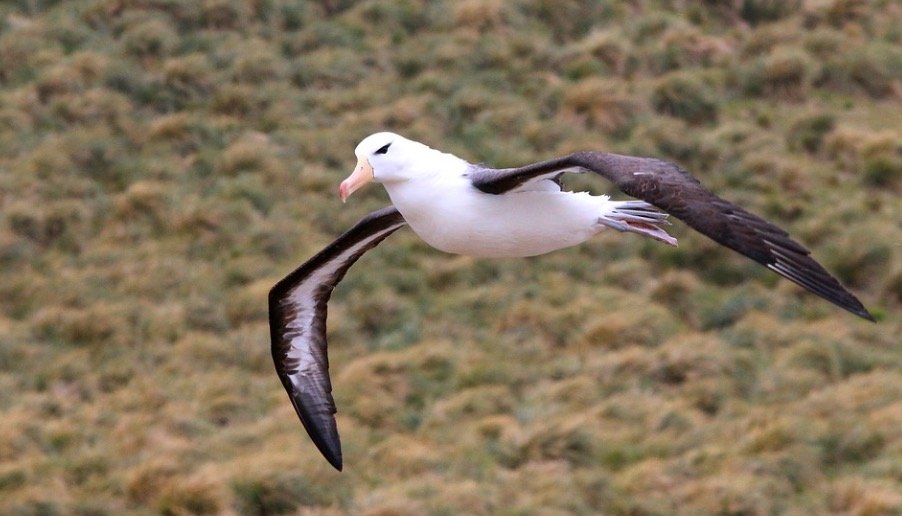
The albatross is a large, powerful bird with a variety of colours, including white, black, and grey. However, other species have a single hue, such as the southern royal albatross, which is nearly entirely white. The long orange or yellow beak has several horned plates and is hooked at the highest.
It also includes tubes on the side that allow it to trace airspeed while on the wing. The sheer immensity of the wingspan is that the foremost astounding physical feature. The giant albatross is the world’s biggest living bird group, extending 11 feet from tip to tip, as measured by the size of its wings.
It may also weigh up to 22 pounds, making it roughly the size of a swan. Even the smallest species has a 6.5-foot wingspan, which is larger than most birds. Because the albatross seldom flaps its wings, they are rigid and arched. Instead, the bird glides for lengthy periods of time on the ocean winds with minimum bodily movement.
Because they have a lot of weight to carry around, this is an essential adaptation. It also implies that they can not fly well when there is no wind. The albatross, on the opposite hand, expends nearly minimal energy while flying.
Squid, krill, schools of fish, and, less typically, zooplankton make up the albatross’ diet. This seabird isn’t afraid to scavenge either. It will follow ships and eat their waste, as well as any dead carrion that floats on the water’s surface.
The specifics of its food vary according to the species. Unlike other common sea birds, like penguins, most species, like the Diomedea exulans , can only dive a couple of feet beneath the surface, making it difficult for them to collect the food they need to survive. Some species may dive into the water quickly to snare their meal if they spot it from the air.
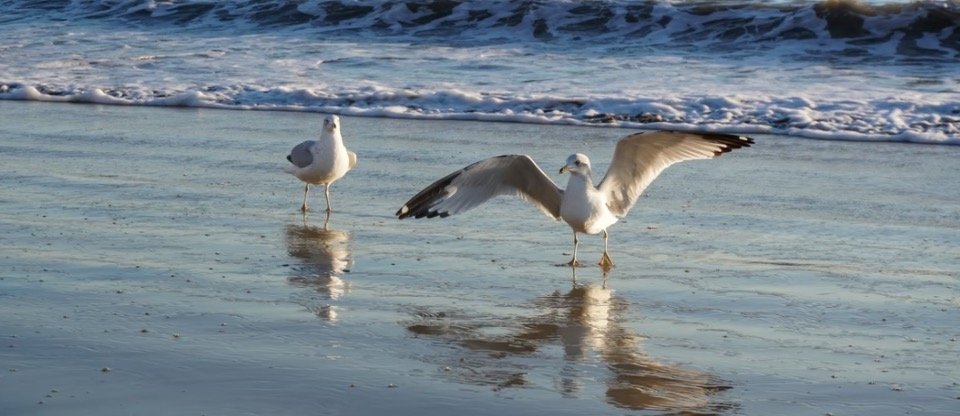
Fun Facts About Albatross!
• Consistent with legend, the albatross bird carries the soul of a lost sailor who died stumped. Depending on who believes it, this may be a good or terrible portent, but this solemn belief did not prevent people from killing or eating them. This was a crucial plot point in Samuel Taylor Coleridge’s 1798 poem, The Rime of the Ancient Mariner. After the protagonist of the story kills an albatross, his ship is beset by calamities, and his fellow sailors order him to hold the dead bird around his neck as a form of punishment. The term “albatross round the neck” comes from this.
• The name albatross is derived from the Arabic word al-qadus or al-gaas, which literally means “diver.” It was subsequently converted into the term “alcatraz” by the Portuguese. Albatross was later integrated into English as a results of this.
• The albatross bird is nearly always in motion, except during the mating season. Every year, the average person can travel thousands of kilometres.
• The albatross is also known as the goony bird because of the amusing manner in which it descends on the ground, rolling forward.
• Around the world, bird watching is a popular activity. The northern royal albatross colonies in New Zealand draw over 40,000 visitors each year.
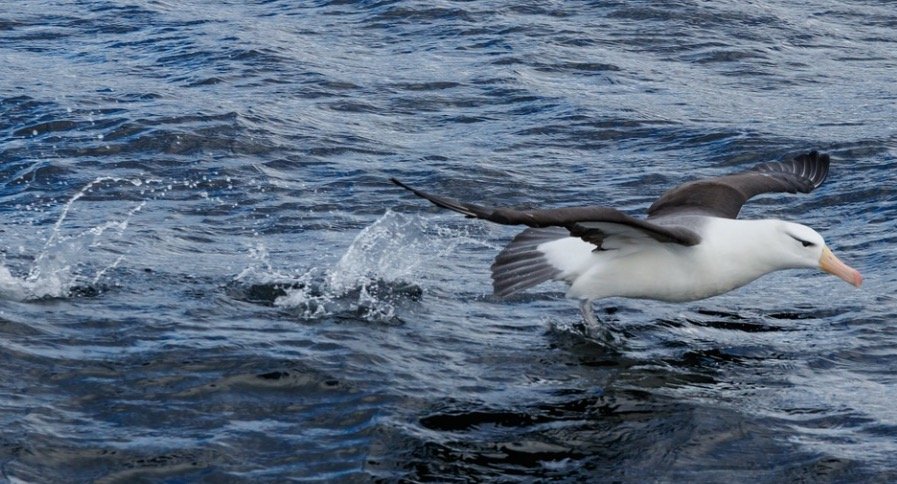
Various Albatross Species
The albatross belongs to the Diomedeidae family of birds. This comes from Diomedes, an Ancient Greek warrior who is claimed to possess fought within the Trojan War. According to mythology, albatrosses sang at his death.
Because the albatross’ taxonomy is debatable, there are anywhere from 13 to 24 species, counting on who’s counting. For example, taxonomists are still debating whether the royal albatross could also be one species or two distinct species, one within the north and one within the south.
The albatross, like petrels, shearwaters, and other seabirds, belongs to the Procellariiformes family. This family’s most recent incarnation lived more than 30 million years ago.
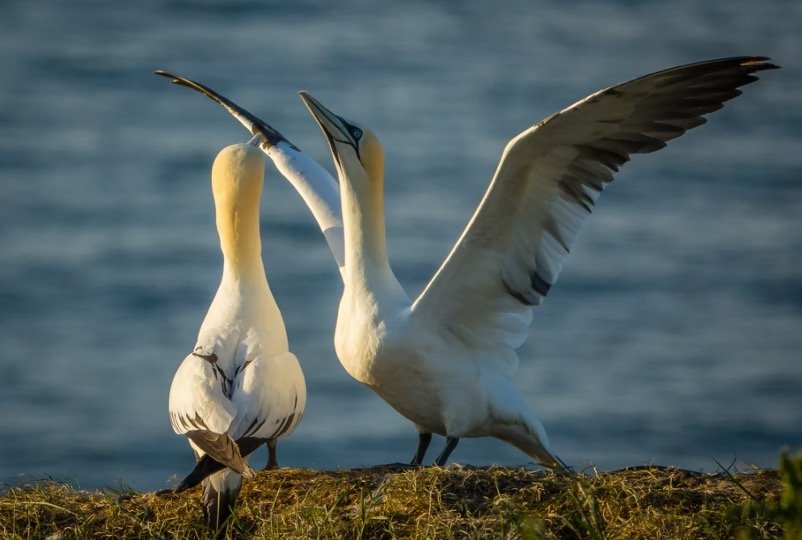
Albatross Appearance and Behavior
The albatross is well-adapted to spending lengthy amounts of time at sea. They have the capacity to soar through the air while also being able to float on water. The albatross must come down to feed and drink from the ocean on occasion, despite being more susceptible to the water.
It has a singular organ that excretes the salt it consumes while drinking. The albatross, while being well-adapted to life stumped, occasionally rests on uninhabited islands. During the breeding season, they also return to land and cluster in enormous colonies that vary in density according to the species.
They appear to be pulled back to the colony where they were born naturally. The albatross may be a native of Antarctica, South America, South Africa , and Australia within the hemisphere . It used to have a vast range throughout most of the Northern Hemisphere, but currently just a few species live in the Northern Pacific area between Alaska, California, Hawaii, and Japan.
The albatross has no trouble navigating the vast waters since it can eat fish and drink seawater. The only thing the bird truly needs to survive is a strong breeze. It has a hard time travelling long distances when the wind is weak.
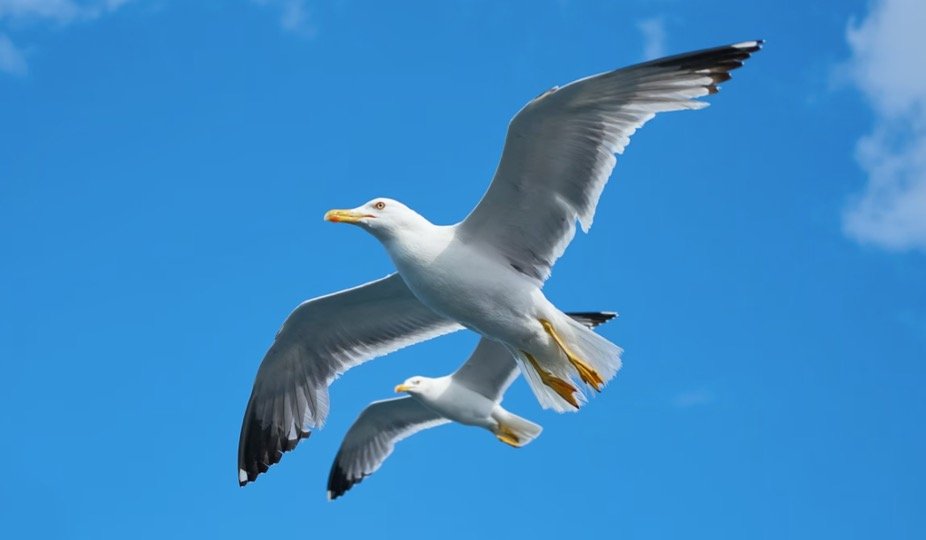
Albatross Predators and Threats
The albatross has few predators since it spends such a lot time floating above the ocean where there are not any other large carnivores. However, young ones are now and then preyed upon by tiger sharks, and introduced animals like cats and rats will occasionally feast on albatross eggs.
Humanity is the only other big predator. It’s possible that some Arctic tribes hunted it as an important source of sustenance within the bleak north. Its feathers were also utilized in the making of opulent headgear.
The most serious threat to its existence, though, might be diminishing food supplies due to overfishing. The albatross is constantly competing with people for rare resources in the open ocean.
Another danger is marine pollution, which builds up in the ecosystem and gradually moves up the food chain. Slow poisoning can cause aberrant development, reproduction, and death.
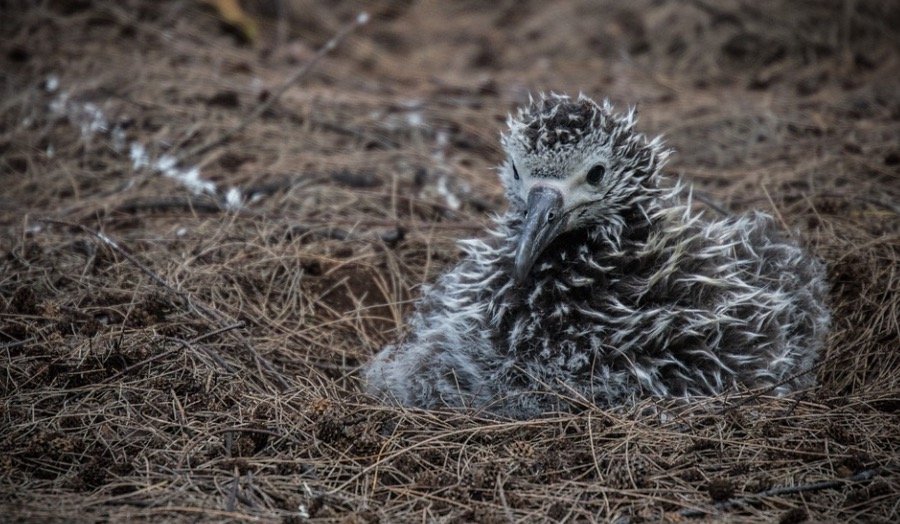
Albatross Reproduction, Babies, and Lifespan
After months stumped, the albatross will move to distant islands and coastal regions to breed. The albatross is selective about the partner it chooses. Many animals cannot afford to pick the incorrect spouse since they mate for life.
To express their sexual availability, they conduct an elaborate song and dance routine. Preening, gazing, bill contact, calling, and pointing are all the present activities. This process must be refined and honed over years of trial and error in young birds.
It eventually narrows down its list of possible mates to just one. This entire procedure is important for his or her existence. The albatross is normally set for life after mating with a partner. Even if the couple is having trouble conceiving, they are unlikely to divorce.
They have a lot of confidence in each other since their friendship is so deep. They incubate the egg, raise the young, and build a big nest consisting of grass, dirt, bushes, and even feathers. They normally select a location in a high area with many approaches.
They only produce one egg every mating season after copulating, and that they normally wait a year before breeding again. A few months later, the baby chick emerges from its eggs, underdeveloped and completely dependent on its parents for practically everything.
The parents alternate between protecting the baby and going on food collection missions in the early stages of its existence. They feed the chick krill, fish, squid, and an oily fluid formed within the stomach from the digestion of other food.
Development is sluggish and challenging as a result of the limited flood supply. The chick will be old enough to defend herself in a few weeks. It will take another three to ten months for it to mature completely and begin hunting on its own. The baby albatross then spends the following five to ten years at sea before returning to reproduce when sexual maturity is reached.
The albatross has a life expectancy of up to 50 years, but there have been a few instances where it has survived longer. Many albatrosses do not make it through their juvenile years.
Albatross Population
The albatross is during a horrible state as a results of decades of human carelessness. Almost every species featured on the IUCN Red List is endangered in how. With just 1.6 million adult individuals left within the wild, the Laysan albatross may be a near-threatened species with a natural range spanning the whole Pacific.
The highly endangered waved albatross and the Tristan albatross, on the other hand, have just a few thousand members apiece. With 10,000 to 100,000 adult individuals surviving, numerous species exist midway between those two extremes.
With only 20,000 left, the huge Diomedea exulans, for instance, are endangered. To rebuild albatross numbers, conservationists feel that better management of current fishing stocks is going to be required.
Restoration of habitat and the prohibition of certain chemical pollutants will also aid in this direction. It is not enough for the US or the other country to act alone.
Because albatrosses have such enormous territories to cover and alterations in one ocean region might affect other sections, success will require a global effort.
